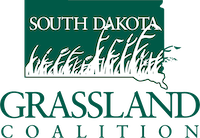As the US Department of Agriculture (USDA) continues to work cooperatively with conservation groups and landowners the Conservation Reserve Program (CRP) continues to improve and is now more practical for working ranches, land health, and wildlife.
Main Focus of CRP Programs
They focus on the use of high-value native grasses and flowering plants instead of the low-value exotic species that were historically used. Today, almost all CRP programs offer practical options for use under a ‘working lands’ model that includes frequent physical management via grazing, haying, or fire alternated with appropriate rest periods. Management actions are ‘allowed’ within the context of an overall plan. As an example, an old CRP field that was planted to smooth bromegrass in the 1980s ultimately became a stagnant environment that offered little wildlife value over time. In contrast today’s CRP options incorporate native plants that provide wildlife food and cover while allowing grazing to occur at appropriate intervals. Grazing will recycle nutrients, stimulate plant growth, improve soil health, and open the stand so that young animals, such as grassland birds, can move around and forage on the insects that are attracted to the site while still having adequate escape cover and safety in close proximity. In essence, old CRP could ‘hold’ wildlife. New CRP programs are designed to both help ‘hold’ and ‘grow’ wildlife.
CRP management plans are cooperatively designed by the landowner and USDA Natural Resources Conservation Service (NRCS) staff or by Pheasants Forever Farm Bill Biologists stationed at NRCS offices. CRP is essentially a rental contract between the landowner and the USDA Farm Service Agency (FSA), where FSA pays the landowner for ‘use’ of the field but where the management is guided by NRCS planning.
Most CRP programs offer contract options for 10 or 15 years and require the land has a proven cropping history. There are some exceptions such as the fairly new CRP program called ‘Grassland CRP’, where existing native or planted grass that does not have a cropping history may be eligible. Under grassland CRP the landowner receives a rental payment and can still graze or lease the pasture or grassland if they choose, but an NRCS approved grazing plan is required.
WHO TO CONTACT
For more information on all CRP programs, contact your local USDA service center and ask to speak with the Pheasants Forever Farm Bill Biologist for your area. This is an important first step, as these individuals will help you assess your situation and will work to identify which CRP programs might be right for you and how you can improve your chances for acceptance. The next step is to contact FSA (often in the same building as NRCS) and request to make an application to one or more CRP programs. Ultimately, if your bid is accepted, you will then shift back to working with NRCS or Pheasants Forever staff to develop a management plan.
There are many options for assistance in long-term planning for grasslands, including SDSU Extension Range Management Field Specialists, SD Game Fish and Parks private lands staff, US Fish and Wildlife Service Partners Program staff, Pheasants Forever Farm Bill Biologists, and NRCS Range Management and Soils staff. Reach out to any of these organizations for guidance on establishing and maintaining healthy grasslands. Finally, the SD Grassland and Soil Health Coalitions coordinate education and training for grassland management in cooperation with the agencies listed above. Consider attending future grassland workshops, grazing and soil schools, and pasture walks as part of your grassland transition plan.
